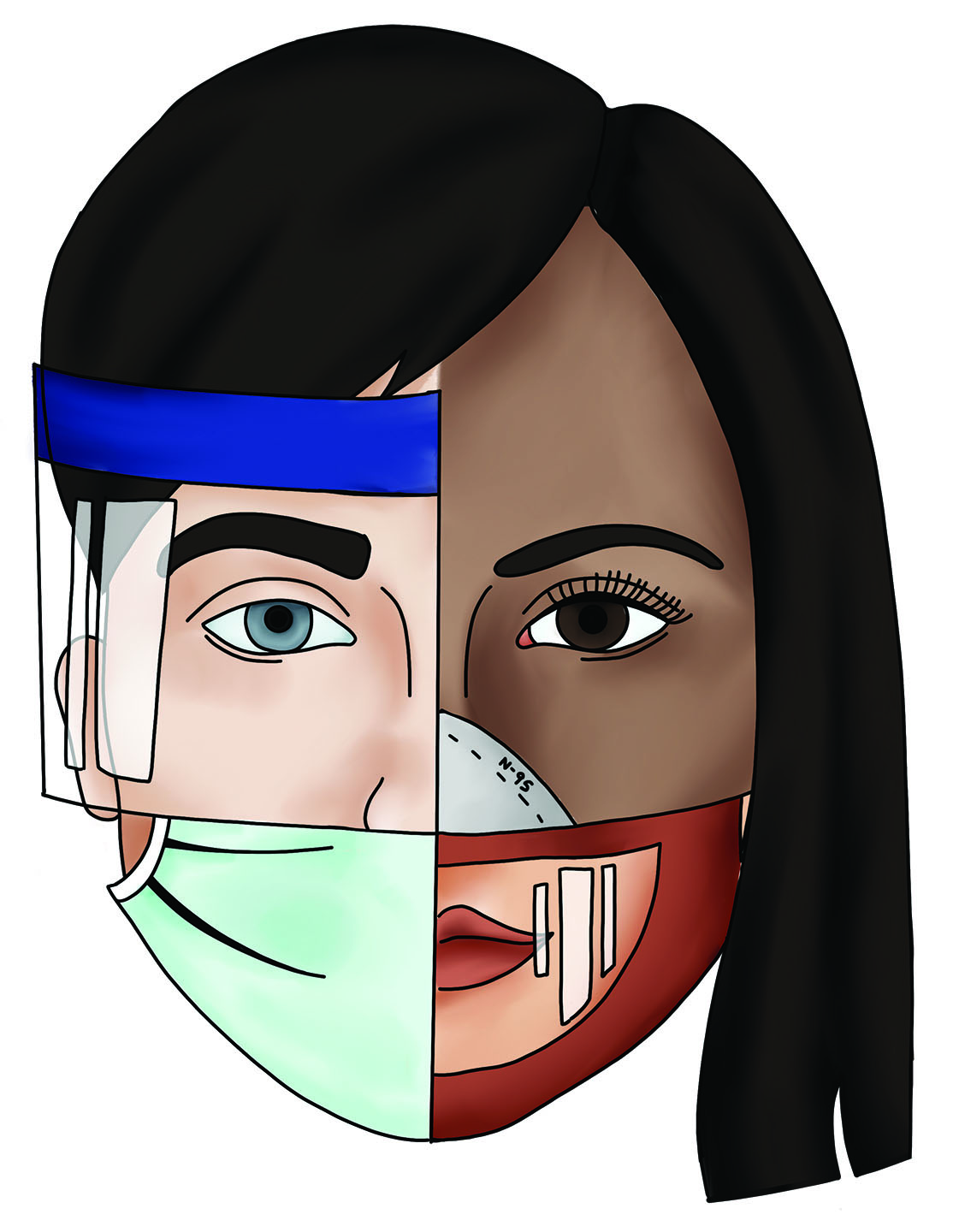
‘The eyes say a lot’: Masks change communication between students, faculty
With new procedures and precautions on USD’s campus, wearing a mask at all times in an indoor setting for professors and students has caused communication in the classroom to be different than previous years.
Lori Costello, an assistant professor of Strategic Communication, said mask-wearing, muffled voices and a lack of face recognition have been an obstacle during class. Costello said wearing a face shield instead of a cloth mask has benefited her ability to communicate while adhering to USD COVID-19 guidelines.
“Recently I purchased a face shield and I’ve been wearing it instead of a mask,” Costello said. “I think it’s better for the students who have an easier time understanding me when they can read my lips.”
Communication differences because of mask-wearing and social distancing have caused more technology use in the classroom, Kevin Reins, associate professor of Mathematics Education, said.
Additional technology use can cause different problems, Reins said.
“Technology in the classroom has had more of an impact on my ability to convey certain messages, or in my case, provide active learning experiences and class discussions in mathematics,” Reins said. “When a student in a face-to-face class shares, Zoom students are incapable of picking up their voices.”
Costello said, despite challenges like these, the precautions USD is taking, like wearing masks and communicating more with technology, is worth the challenge.
“In times when I might get frustrated about the masks, all I have to do is go online and read about what’s happening with the virus, and then it doesn’t seem like such an inconvenience,” Costello said. “I don’t want to get sick, and I certainly don’t want my students to get sick either, so I think wearing the masks is the best protection we have in the classroom.”
Costello said she believes positive changes in strategic communication have arisen due to the new guidelines. One of these aspects, Costello said, has been able to learn to communicate and read students’ eyes more.
“The eyes say a lot, and I can usually tell if a student is smiling even when I can’t see their lips because I can see it in their eyes,” Costello said. “I can usually tell if someone is confused, and if I pick up on that, then I might try to continue to explain a concept or provide an additional example.”
As of publication, USD plans to continue the current COVID-19 guidelines until the end of the semester on Nov. 24. The University will then reassess its guidelines for teachers and students for the second semester starting on Jan. 11.


